This blog examines the top 10 ingress controllers for Kubernetes in 2025, providing a detailed comparison of their key features, use cases, and security capabilities. It also guides readers on how to select the best ingress controller for Kubernetes, taking into account performance, flexibility, and deployment requirements.
“Ingress is the key to exposing your services to the outside world – and choosing the right controller can make or break your Kubernetes traffic strategy.”
– Kubernetes Documentation
That quote sums it up perfectly.
Tired of struggling with traffic routing in your Kubernetes cluster?
Choosing the best ingress controller for Kubernetes can feel like hunting for a needle in a haystack. There are plenty of choices, but only a few truly rise above the rest.
And as the quote suggests, picking the right one isn’t just a technical decision; it’s foundational to how your cluster handles traffic, scales, and stays secure.
In this blog, I’ve broken down the top 10 best ingress controllers for Kubernetes for 2025, so you can deploy with confidence, secure your endpoints, and scale seamlessly.
Let’s walk through the top picks that DevOps teams, platform engineers, and cloud-native architects are trusting this year.
- Top 10 Ingress Controllers for 2025: A detailed list featuring the best options like Ecosmob SIP Ingress Controller, NGINX, Traefik, and Istio, each reviewed for features, use cases, and why teams love them.
- Security & Performance Focus: Emphasis on secure ingress controllers, SSL/TLS support, WAF integration, and scalability, ensuring your Kubernetes traffic routing is both robust and safe.
- What to Look For in 2025: A practical guide on choosing the best ingress controller for Kubernetes, covering critical factors like TLS termination, observability, configuration flexibility, and community support.
Before we dive into the top choices for 2025, let’s get clear on what a Kubernetes Ingress Controller is, Kubernetes architecture, and what it actually does – and why picking the right one can shape the performance, security, and scalability of your entire cluster.
What is a Kubernetes Ingress Controller?
A Kubernetes ingress controller load balancing that manages external access to services within a Kubernetes cluster, typically HTTP or HTTPS traffic. It listens to the Kubernetes API for changes to Ingress resources and translates them into actual routing configurations.
Think of it as the smart gateway that directs requests to the correct microservice behind the scenes.
In 2025, with Kubernetes security, observability, and multi-cloud support becoming more critical, selecting the best Kubernetes ingress controller is about far more than just forwarding packets.
Handling SIP traffic on Kubernetes? Tried Ecosmob’s SIP Ingress yet?
What to Look for in an Ingress Controller?
Before jumping into our Kubernetes ingress controllers list, here are some key factors to consider:
- TLS/SSL Termination: Built-in support for HTTPS and certificate management (e.g., Let’s Encrypt).
- Performance & Scalability – Can it handle high volumes and scale horizontally?
- Custom Rules & Flexibility – Granular routing capabilities (path, host, header-based).
- Security Features – WAF integration, rate limiting, and DDoS protection are essential for secure ingress controllers.
- Observability – Metrics, logs, tracing support for deep diagnostics.
- Community & Support – A thriving community or commercial backing goes a long way.
Kubernetes Got Its Name from Greek!
The word Kubernetes comes from the Greek word κυβερνήτης (kubernētēs), meaning “helmsman” or “pilot.” It was chosen to represent how the system helps “steer” application containers, much like a ship’s captain navigating the seas.
Now, let’s dive into the top contenders!
1. Ecosmob SIP Ingress Controller
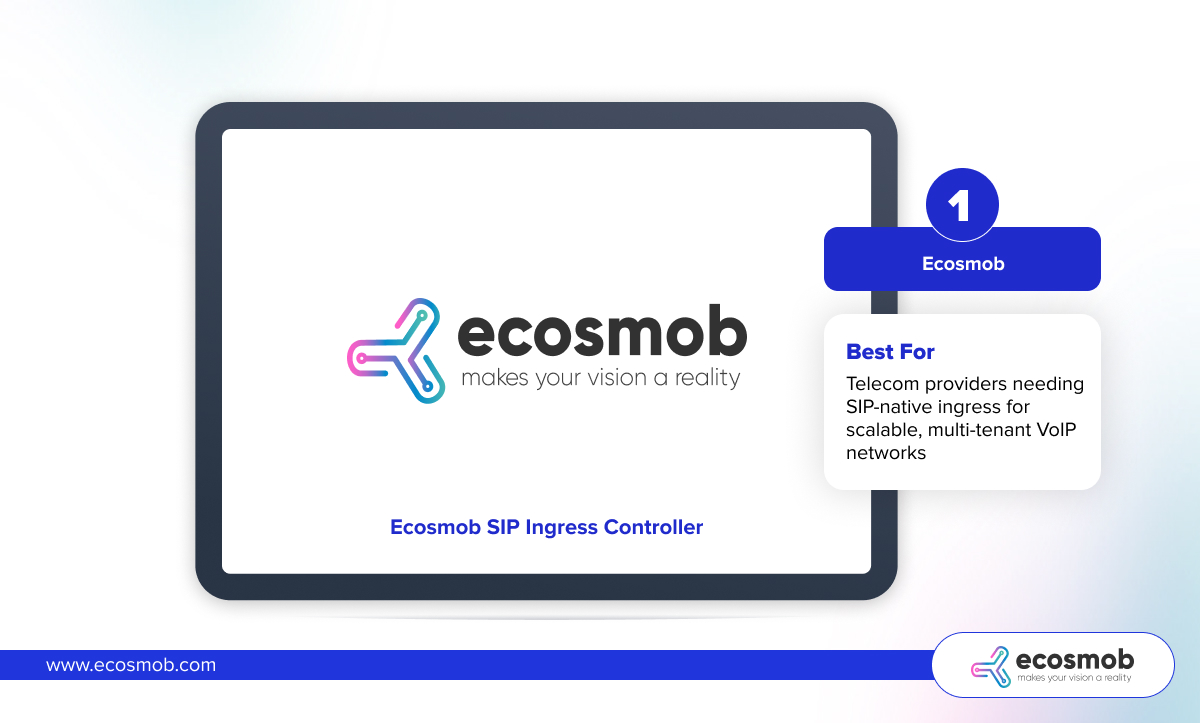 Best for: Telecom providers needing SIP-native ingress for scalable, multi-tenant VoIP networks
Best for: Telecom providers needing SIP-native ingress for scalable, multi-tenant VoIP networks
Why it’s loved: SIP Ingress Controller is the world’s first ingress controller built specifically for SIP traffic. It redefines how service providers manage and route SIP requests, delivering security, control, and performance that traditional ingress tools weren’t designed to handle. It’s a game-changer for ITSPs, VoIP operators, and MVNOs looking to modernize their infrastructure.
Key Features:
- First SIP-native ingress controller
- Native support for FreeSWITCH and Asterisk clusters
- Built-in TLS support for secure SIP over WebSockets (WSS)
- Deep observability with custom SIP metrics
- Multi-tenant traffic isolation
- Protocol normalization for interoperability
- Topology hiding & NAT traversal
- Built-in real-time analytics & monitoring
Why choose it: It’s the first ingress controller engineered for SIP built from the ground up for telecom networks. From dynamic SIP routing to tenant-level isolation and protocol normalization, Ecosmob SIP Ingress Controller delivers what traditional ingress tools can’t. Whether you’re scaling your VoIP services or modernizing legacy infrastructure, this controller offers the precision, performance, and visibility today’s service providers demand.
Is your current ingress controller optimised for SIP and VoIP workloads?
2. NGINX Ingress Controller for Kubernetes
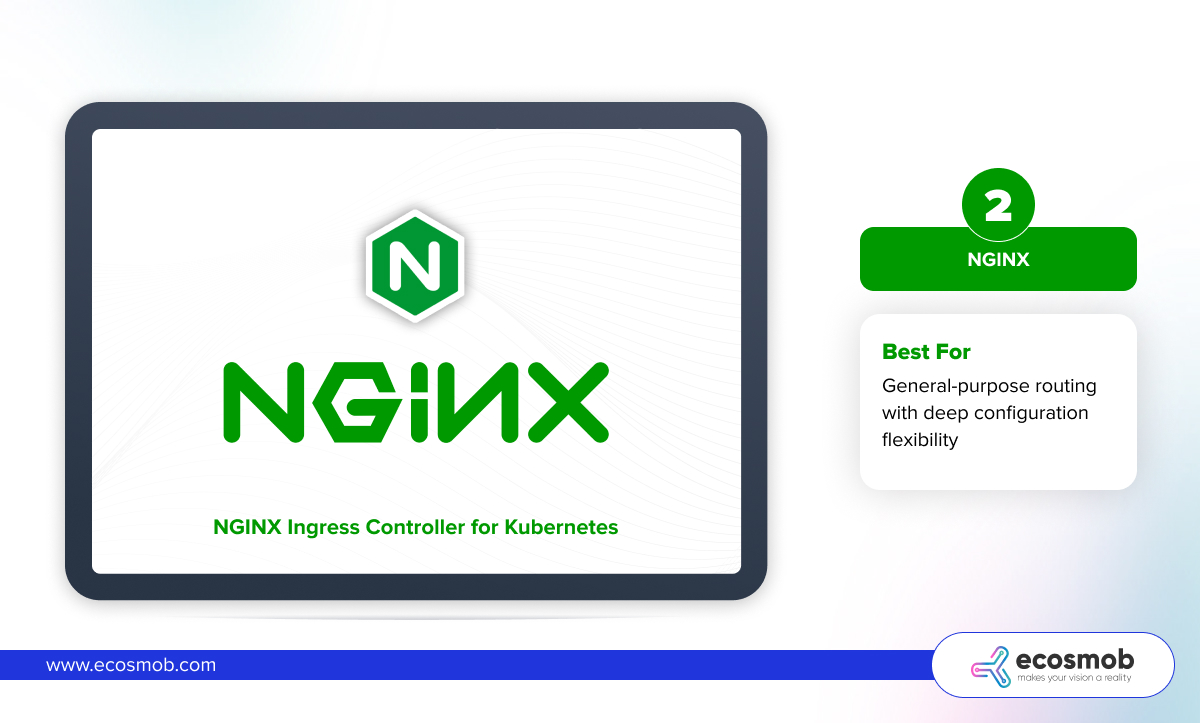 Best for: General-purpose routing with deep configuration flexibility
Best for: General-purpose routing with deep configuration flexibility
Why it’s loved: It’s arguably the most popular and widely adopted Nginx ingress controller for Kubernetes. Built and maintained by the Kubernetes community (and F5 for the commercial variant), NGINX combines reliability with a huge configuration surface.
Key Features:
- Supports advanced path, host, and header-based routing
- TLS termination with Let’s Encrypt support
- Custom annotations for fine-grained behavior
- Native WAF and rate-limiting modules
Why choose it: Whether you’re building a web app, API gateway, or hybrid cloud deployment, NGINX provides a battle-tested, secure ingress controller trusted across the board.
TLS Termination Isn’t Just Fancy Jargon!
When ingress controllers terminate TLS, they decrypt secure HTTPS requests before routing them internally. This saves compute cycles on your app pods and centralises security, especially useful for performance and certificate management.
3. HAProxy Ingress Controller
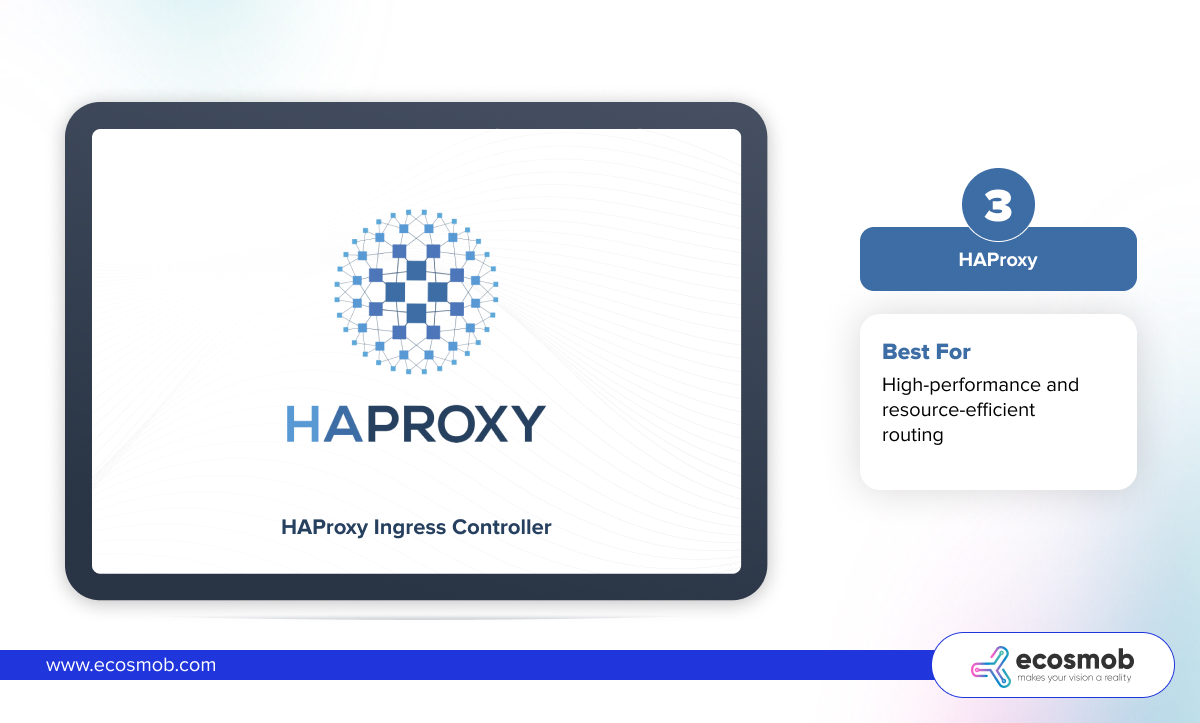 Best for: High-performance and resource-efficient routing
Best for: High-performance and resource-efficient routing
Why it’s loved: HAProxy is a name synonymous with fast, reliable load balancing. The ingress controller version brings that performance to Kubernetes environments, especially where latency matters.
Key Features:
- TLS re-encryption, SNI routing
- Stickiness and advanced load-balancing algorithms
- Prometheus-compatible metrics
- Extensive security configurations
Why choose it: It’s fast, secure, and offers impressive L4 and L7 capabilities. Great for real-time apps and high-throughput APIs.
4. Traefik Ingress Controller
 Best for: Developers who want a fast setup and built-in observability
Best for: Developers who want a fast setup and built-in observability
Why it’s loved: Traefik simplifies ingress with automatic discovery of services and SSL. It’s cloud-native, with strong support for dynamic configurations and microservice architectures.
Key Features:
- Native Let’s Encrypt integration for TLS
- Built-in dashboard and Prometheus metrics
- HTTP/2 and gRPC support
- Middleware for authentication, redirection, retries
Why choose it: Ideal for fast-moving teams. You get a fully functional best ingress controller with minimal setup time.
Traefik Was Named After “Traffic”!
Traefik (pronounced traffic) was designed to simplify routing in modern apps. It auto-discovers services and dynamically configures routes, making it a favourite in the DevOps world for fast-moving projects.
5. Contour by VMware
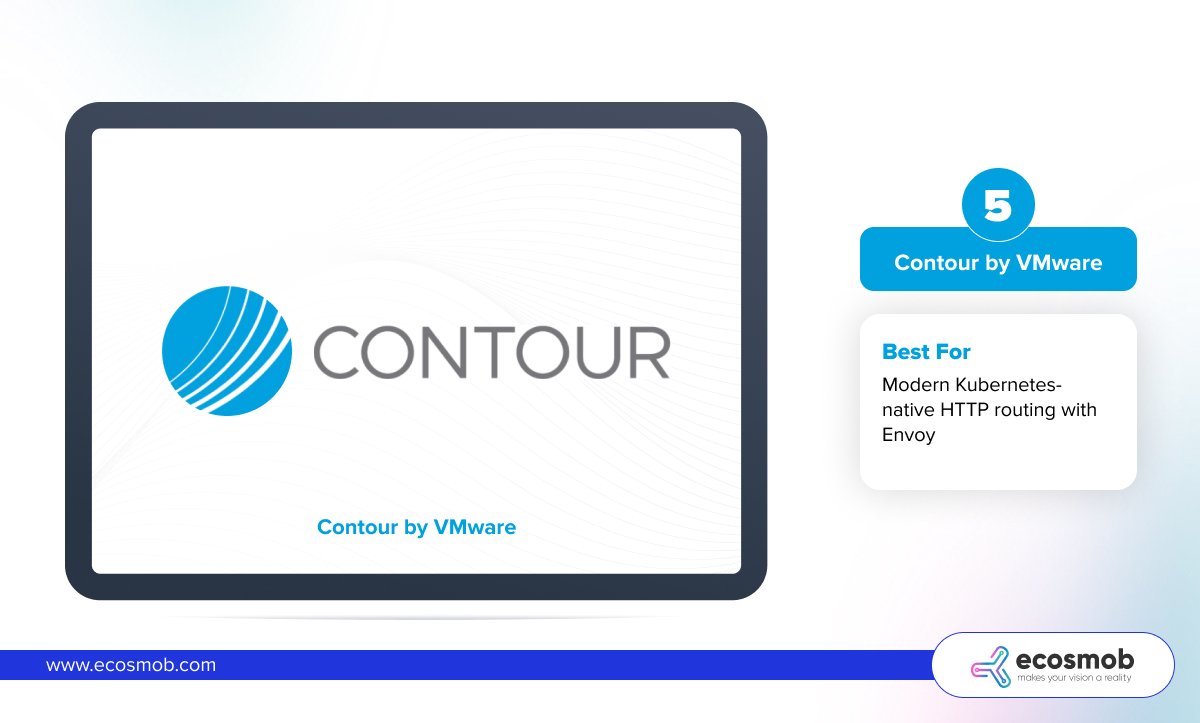 Best for: Modern Kubernetes-native HTTP routing with Envoy
Best for: Modern Kubernetes-native HTTP routing with Envoy
Why it’s loved: Contour is built around Envoy, which is famous for its rich observability and L7 filtering capabilities. It provides scalable ingress with CRD-based configuration.
Key Features:
- Envoy-powered high-performance proxy
- Kubernetes-native CRDs for clean config
- TLS termination and passthrough support
- Built-in support for multi-team routing isolation
Why choose it: Great for multi-tenant clusters and teams needing cleaner role boundaries. Another strong pick for the best Kubernetes ingress controller options this year.
6. Kong Ingress Controller
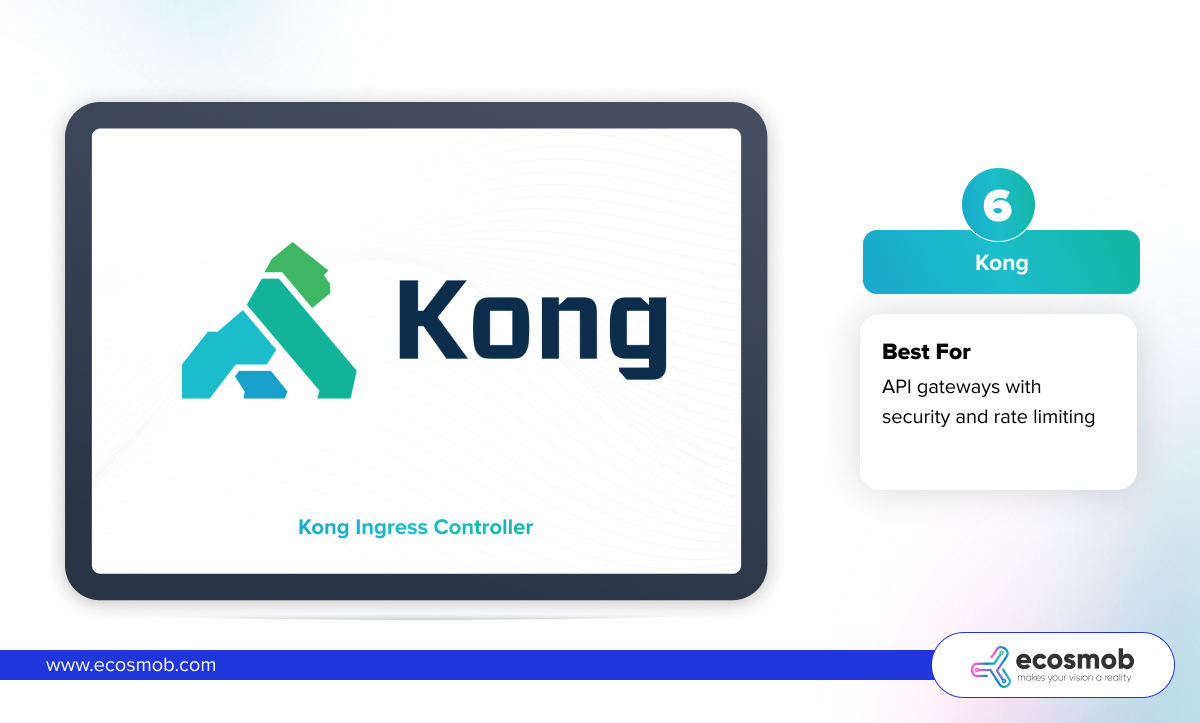 Best for: API gateways with security and rate limiting
Best for: API gateways with security and rate limiting
Why it’s loved: Kong combines API gateway capabilities with ingress. It shines in API-heavy applications needing plugins like JWT auth, rate limiting, and logging.
Key Features:
- Native API management features
- Plugin-based architecture
- Built-in OAuth2, ACL, and Key Authentication
- Scales well with Kubernetes-native deployment
Why choose it: It’s more than an ingress, it’s an extensible secure ingress controller platform.
Ingress Can Be a Bottleneck, If You Choose Poorly!
The ingress controller handles all inbound traffic, so a poorly configured or underpowered ingress can become a serious bottleneck. Choosing the right one is critical for performance and security, especially at scale.
7. Istio Ingress Gateway
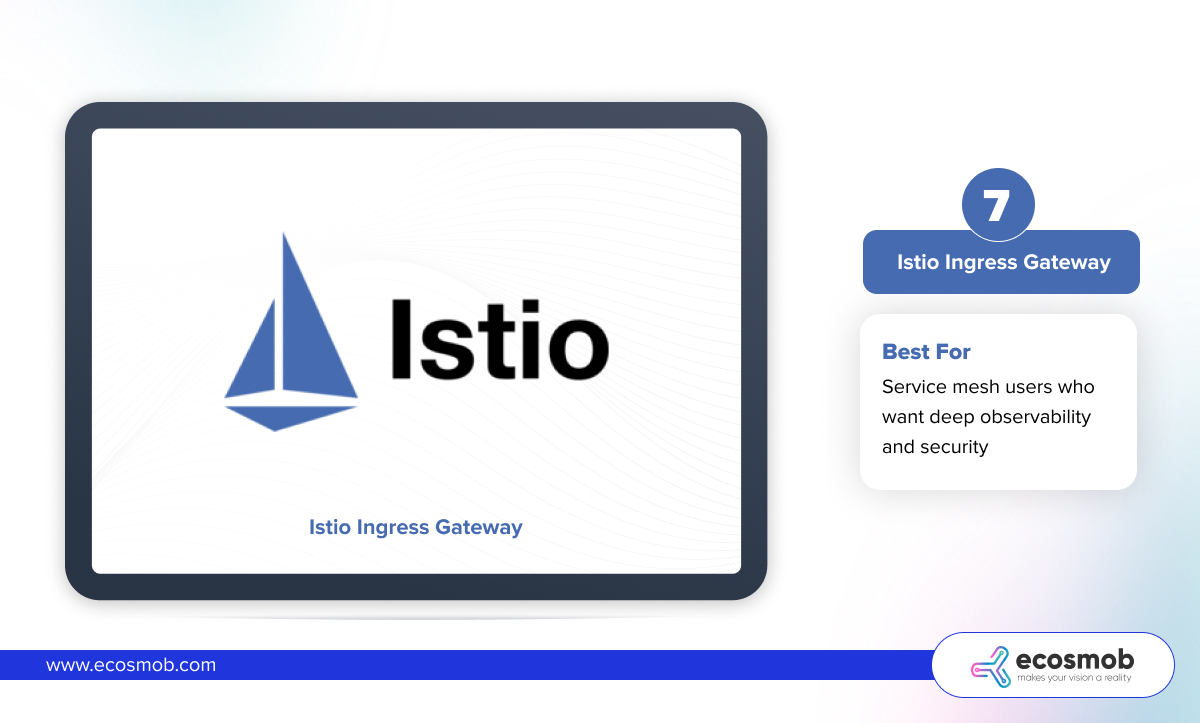 Best for: Service mesh users who want deep observability and security
Best for: Service mesh users who want deep observability and security
Why it’s loved: If you’re already using Istio, the ingress gateway adds powerful mTLS, policy enforcement, and traffic shaping on the edge.
Key Features:
- Layer 7 routing with full service mesh policies
- mTLS and SPIFFE identity management
- Powerful RBAC and audit logging
- Sidecar-less ingress support
Why choose it: Best for advanced users already in the Kubernetes list ingress controllers with service mesh requirements.
8. Gloo Edge
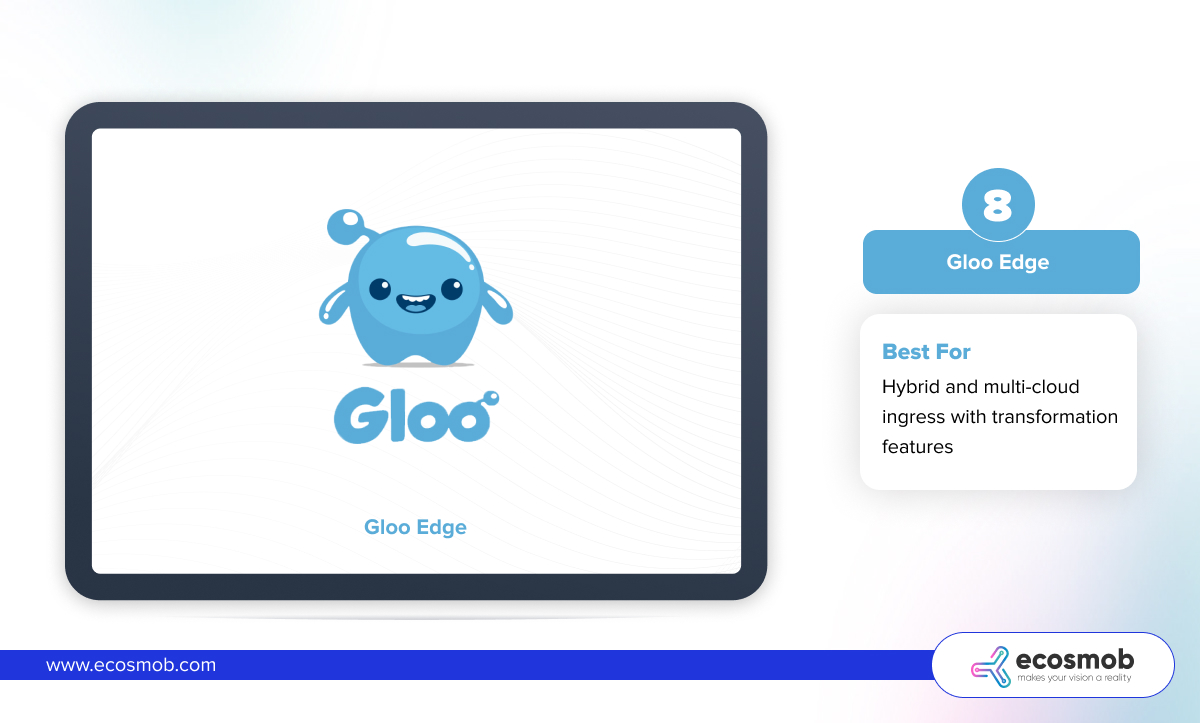 Best for: Hybrid and multi-cloud ingress with transformation features
Best for: Hybrid and multi-cloud ingress with transformation features
Why it’s loved: Gloo Edge supports REST, gRPC, WebSockets, and more—plus traffic transformation and routing to VMs or external services.
Key Features:
- Multi-protocol support (REST, gRPC, GraphQL)
- Function-level routing
- External auth and rate limiting
- Supports Kubernetes and legacy environments
Why choose it: A modern open-source ingress controller that bridges microservices with legacy systems effectively.
Every Ingress Controller Implements the Same API Differently!
While all ingress controllers follow the standard Kubernetes Ingress API, each implements it in its own unique way.
9. Ambassador Edge Stack
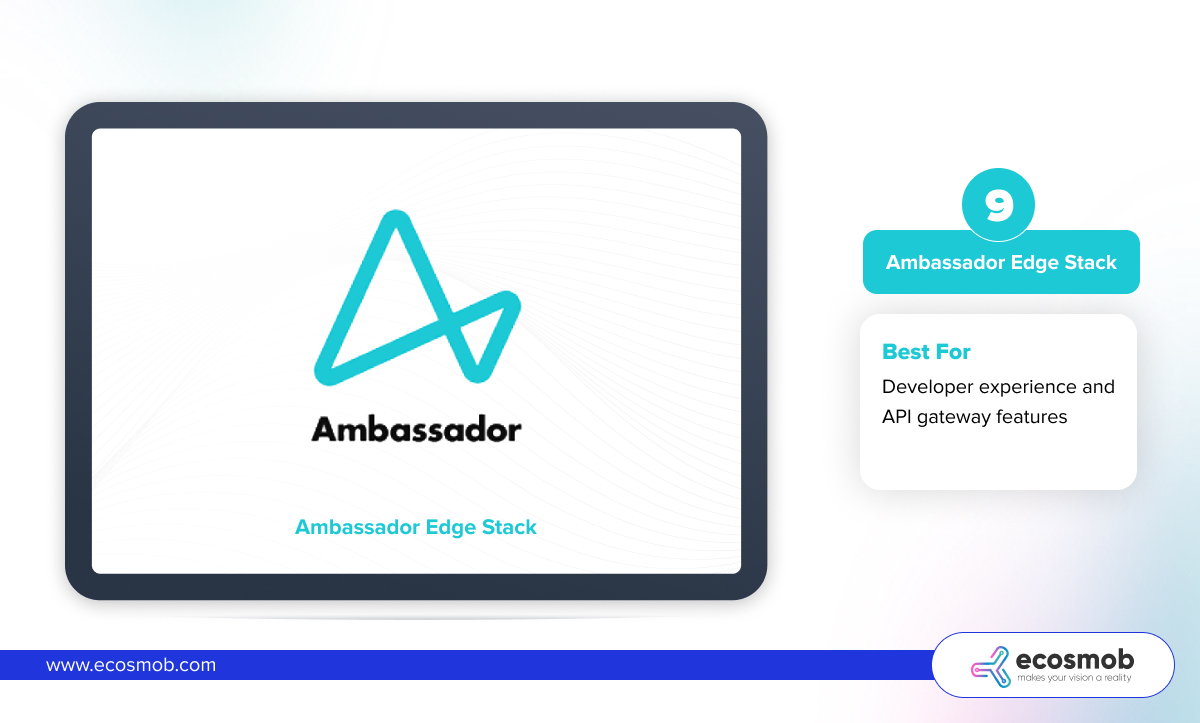 Best for: Developer experience and API gateway features
Best for: Developer experience and API gateway features
Why it’s loved: Ambassador combines Kubernetes-native ingress with developer-friendly features. It’s built on Envoy and tailored for fast iteration.
Key Features:
- Authentication and rate limiting out of the box
- DevPortal for API publishing
- gRPC and WebSocket support
- Built-in CI/CD integration
Why choose it: Developers love the productivity boost and real-time configuration updates.
10. AWS ALB Ingress Controller
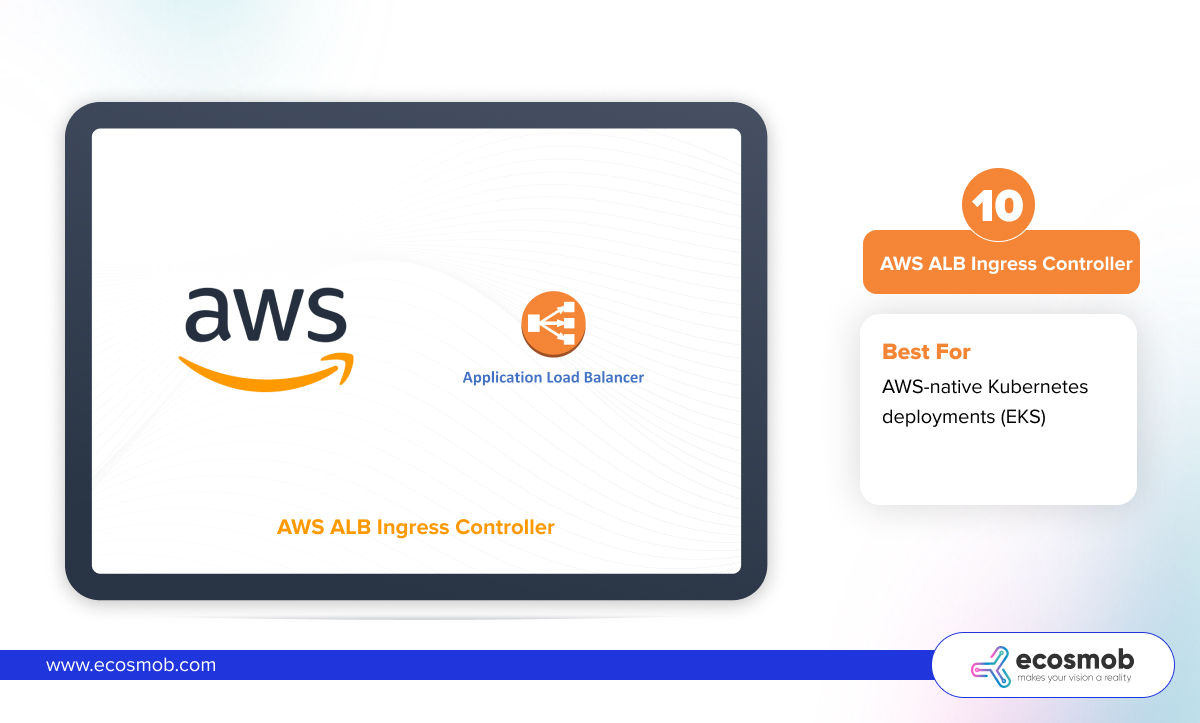 Best for: AWS-native Kubernetes deployments (EKS)
Best for: AWS-native Kubernetes deployments (EKS)
Why it’s loved: Deep integration with AWS services like ACM, WAF, and CloudWatch makes it a natural fit for teams on EKS.
Key Features:
- Automatically provisions and manages ALBs
- Native AWS IAM and SSL cert integration
- Supports external-dns and weighted routing
- Tight cost and security controls
Why choose it: If your Kubernetes runs on AWS, this controller feels native, automating what would otherwise be manual.
Ingress Controllers Aren’t Just for HTTP/HTTPS!
While most are used for web traffic, some advanced ingress controllers, like Ecosmob SIP Ingress Controller, are designed for VoIP/SIP traffic, making them essential in telecom and unified communications setups.
Wrapping Up
Choosing the best ingress controller for Kubernetes in 2025 depends on your specific application needs, real-time communication, APIs, multi-cloud architecture, or secure edge traffic.
Whether you need the tried-and-true nginx ingress controller for Kubernetes, or something more niche like Ecosmob SIP ingress controller, there’s an option for every team in this Kubernetes list of ingress controllers round-up.
Whatever you choose, make sure it aligns with your security posture, scaling requirements, and observability needs, because in Kubernetes, the ingress is where your first impression is made!
Looking for a secure, SIP-native ingress controller? Have you checked out Ecosmob?
FAQs
What is Kubernetes?
Kubernetes is an open-source container orchestration platform designed to automate the deployment, scaling, and management of containerised applications. It helps developers and DevOps teams manage clusters of hosts running Linux containers efficiently.
What is an Ingress Controller in Kubernetes?
An Ingress Controller is a specialised load balancer for Kubernetes that manages external access to services within a cluster, typically via HTTP/HTTPS routes. It watches for changes to Ingress resources and configures the underlying load balancer or proxy (like NGINX or HAProxy) accordingly.
How is Ingress different from a Service in Kubernetes?
While a Service exposes a set of pods to the network (within or outside the cluster), Ingress provides advanced routing rules to manage how traffic from outside the cluster is directed to Services. Ingress can handle things like path-based routing, SSL termination, and virtual hosting.
Do I need an Ingress Controller for every Ingress resource?
No. You typically deploy one Ingress Controller per cluster, which can handle multiple Ingress resources. The controller watches all Ingress definitions and dynamically updates its configuration to route traffic accordingly.
What are some popular Ingress Controllers?
Some widely used Ingress Controllers include NGINX Ingress Controller, HAProxy Ingress, Traefik, Kong Ingress Controller and AWS ALB Ingress Controller (specific to Amazon EKS).


